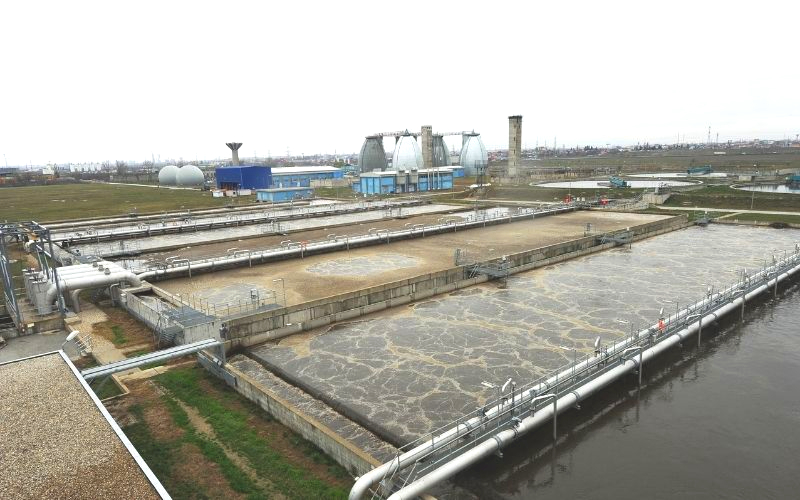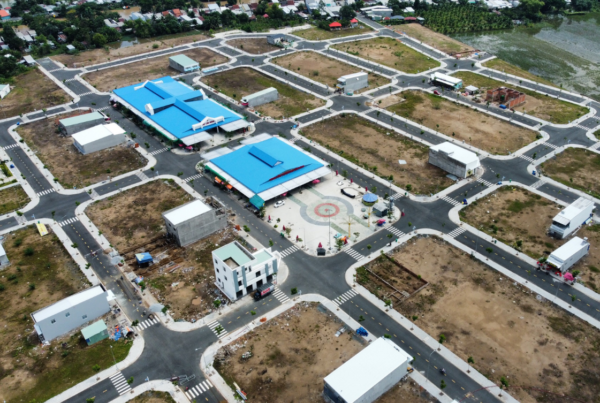To treat wastewater, in practice, the following three methods are often applied: mechanical, physicochemical, biochemical (or biological), and to eliminate pathogenic bacteria in wastewater, it is necessary to perform a reduction stage. before discharging into rivers and lakes.
1. MECHANICAL HANDLING
The essence of the mechanical treatment method of wastewater is to remove insoluble impurities from wastewater by decanting, settling and filtering.
In this method, the following works are usually applied:
Garbage screens: To remove all kinds of garbage and impurities with a size larger than 5mm, we usually use screen screens, while impurities smaller than 5mm usually use screens.
Grease, oil and petroleum sump tanks:
– These types of works are often applied when treating industrial wastewater, in order to remove impurities lighter than water: grease, oil, … and all other types of floating substances.
– For domestic wastewater, when the fat content is not high, often the fat removal is not done in the grease removal tank, but in the settling tank thanks to the levers arranged right in the settling tank.
Sedimentation tanks: Sedimentation tanks are used to remove suspended substances with a density greater than or less than the density of water. Suspended substances with a density greater than that of water will settle to the bottom of the tank, while suspended matter with a lower density will float to the surface of the water.
Sedimentation tanks are divided into three types:
– The horizontal settling tank on the ground is rectangular in shape. The settling process is carried out according to the horizontal movement of the wastewater with the corresponding calculated speed.
– Vertical settling tanks are usually round or square in shape. The settling process is carried out in a vertical direction opposite to the direction of the movement of wastewater.
– Centrifugal settling tanks on the ground usually have a circular shape, the process of settling suspended matter occurs similar to that in horizontal clarifiers, but different in that the wastewater moves from the center to the surrounding.
Filter tank:
Filter tanks are used to remove substances in suspension with small sizes by filtering them through a special filter mesh or through a layer of filter material. This work is only applied to treat a few types of industrial wastewater.
In the case when the required level of wastewater cleaning is not very high (40 – 60%) and sanitary conditions allow, the mechanical treatment method plays a major role in the treatment plant. In other cases, the mechanical treatment is only a preliminary cleaning stage before the biochemical (biological) treatment.
Mechanical treatment can remove up to 60% of insoluble impurities in domestic wastewater and can reduce NOS by up to 20%.
In order to increase the working efficiency of the mechanical treatment method, it is possible to apply many measures to enhance the settling process in the respective works: aeration tank with residual activated sludge, aeration tank without residual activated sludge. (settling efficiency can reach 60 – 65%).

2. WASTE WATER TREATMENT BY CHEMICAL AND CHEMICAL METHODS

The essence of the chemical method is to introduce certain reactants into the wastewater. This substance reacts with impurities contained in wastewater and has the ability to remove them from wastewater in the form of sediment or in a non-toxic dissolved form. For example, the method of neutralizing wastewater containing acid and alkali, oxidation method, etc.
The physicochemical methods commonly applied to wastewater treatment are: coagulation, absorption, extraction, flotation, etc.
Chemical and physicochemical methods are mainly applied to industrial wastewater treatment.
Depending on local conditions and the extent of treatment required, chemical or physico-chemical treatment is the final stage (if the treatment is satisfactory, it can be discharged to the source) or only the first stage. preliminary stage (e.g. removing some affected malicious links.
3. WASTE WATER TREATMENT BY CHEMICAL METHOD

The essence of the biochemical method is the process of mineralizing organic contaminants contained in wastewater in dissolved, colloidal and finely dispersed forms by biochemical processes. In other words, the essence of the biochemical process is based on the survival of microorganisms capable of oxidizing or reducing organic contaminants contained in wastewater.
Depending on the aeration conditions, biochemical treatments are divided into two types.
The first type consists of constructions in which the aeration process is almost natural: irrigation fields, filter fields, biological lakes… In our country’s climate, natural biological treatment works have a meaning. big. Firstly, it solves the problem of purifying wastewater to the extent necessary, secondly it serves to irrigate fields, enrich the land and raise fish. It is important to research to find the appropriate calculation parameters for our country’s conditions and on that basis to find the most optimal treatment method. That is the most correct research method on the problem of wastewater treatment in Vietnam in the current conditions.
The second form includes aeration works performed in artificial conditions: biological filter tanks (drip bio-phin), high-load biological filter tanks, aerotank
The biological treatment process under artificial conditions can be carried out to the full extent (complete biological treatment) when the NOS of the wastewater is reduced to 90-95% and not completely when the NOS is reduced to 40-80%
The biological treatment stage is carried out after the mechanical treatment stage. The settling tank in the mechanical treatment stage is called the first stage settling tank, or simply called the first settling tank.
After the biophilic biological treatment stage, along with the treated wastewater, there is a microbial membrane, and in the aerotank tank, there is activated sludge. To remove microbial film and activated sludge from wastewater after biophil and aerotank, settling method is often applied. The settling tank in this case is called the second settling tank (settling tank II).
In the case of biological treatment by aerotank, a certain amount of activated sludge must be returned to the aerotank.
This type of sludge is called circulating activated sludge, which accounts for about 40-50% of wastewater volume.
The remaining amount of activated sludge is called residual activated sludge. The residual activated sludge usually from clarifier II is first led to the sludge compaction tank to reduce the moisture content of the sludge to a required value and then to the methane tank with fresh residue from the clarifier I.
The process of artificial biological treatment cannot completely eliminate bacteria, especially pathogenic bacteria. Therefore, after the artificial biological treatment stage, it is necessary to carry out the disinfection phase of wastewater before discharging into the source.
The disinfection stage can be done after the mechanical treatment stage if the wastewater treatment plant is limited to mechanical treatment only.
ARES Environmental Solution JSC








